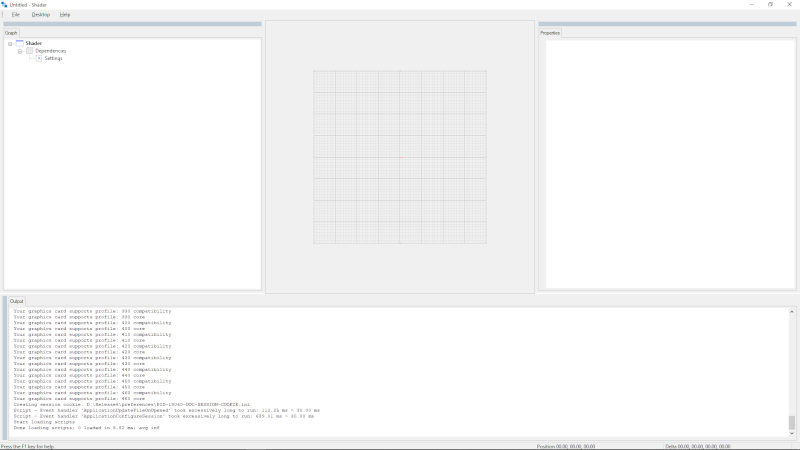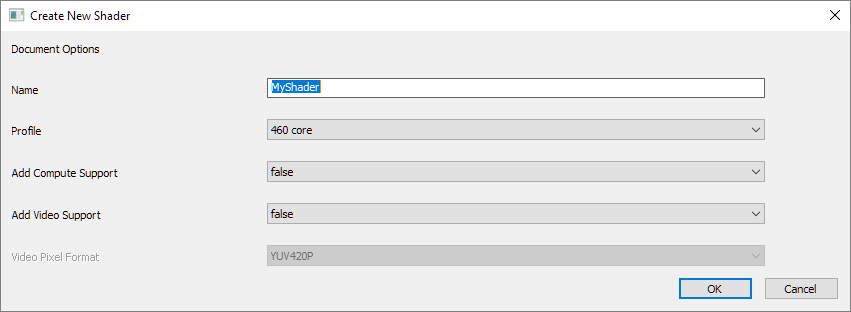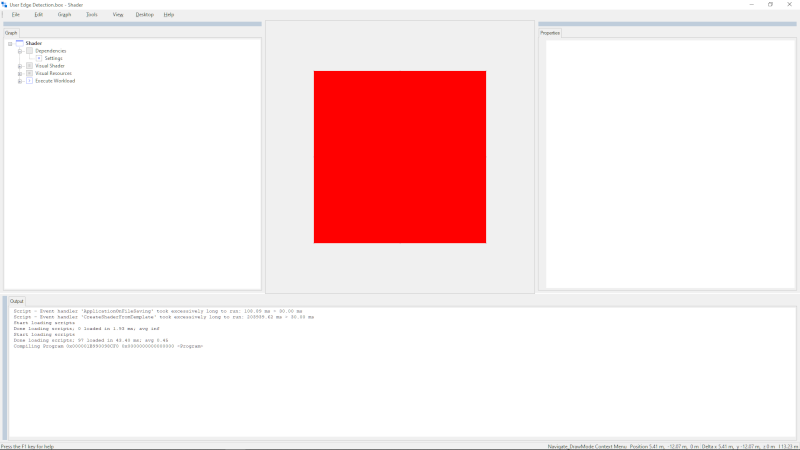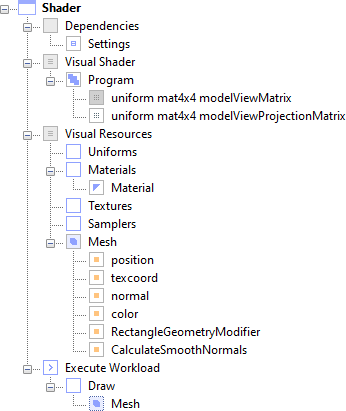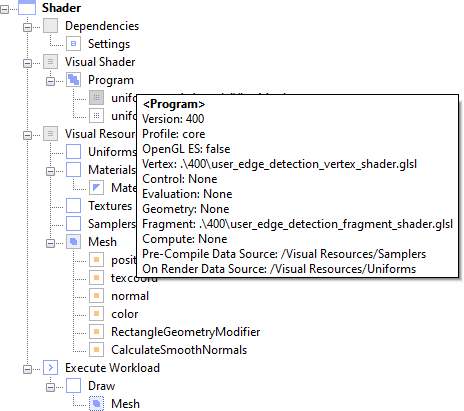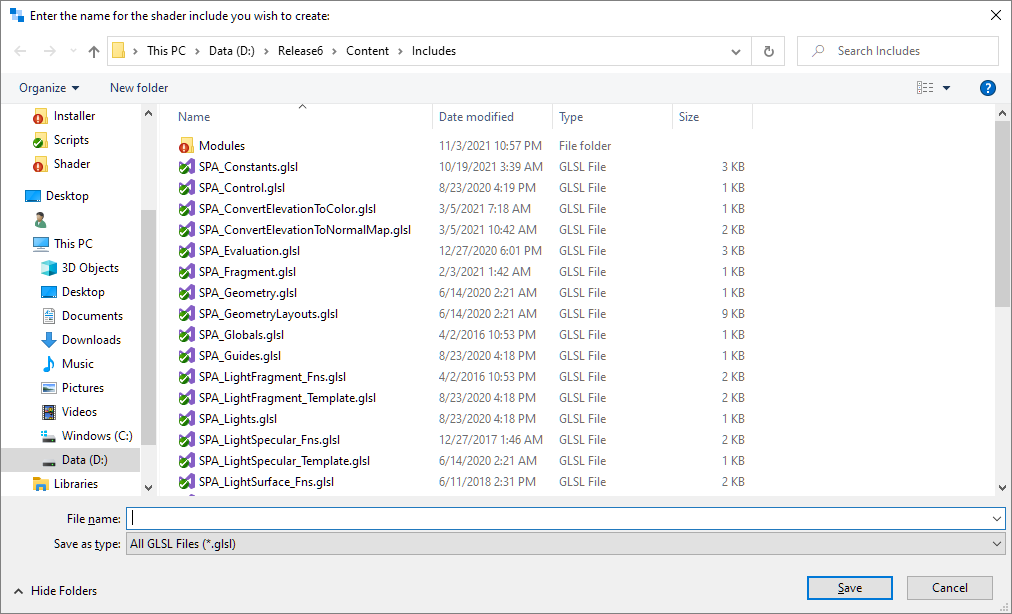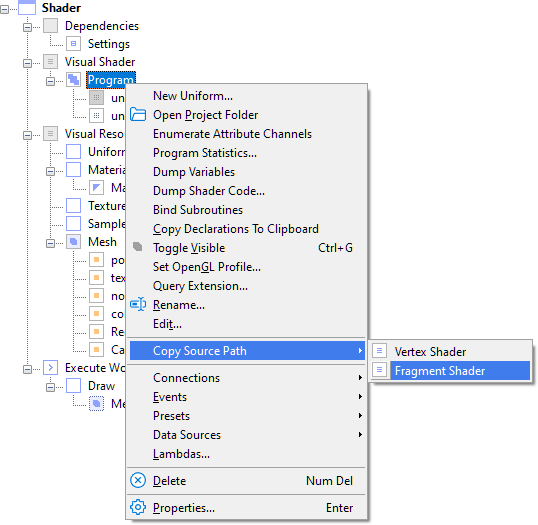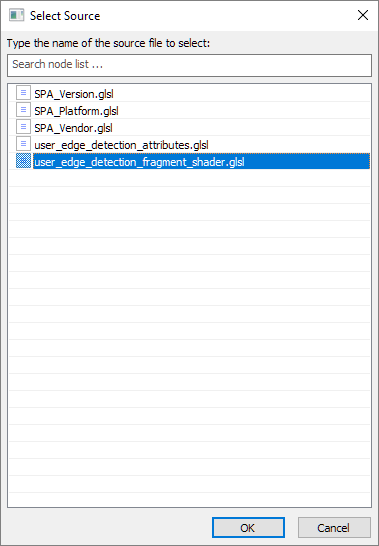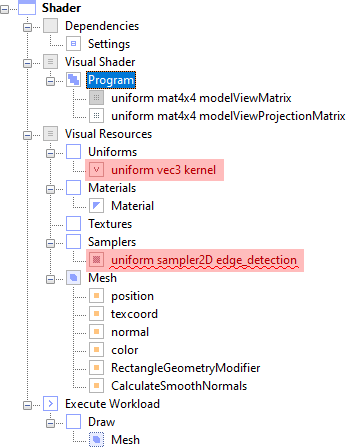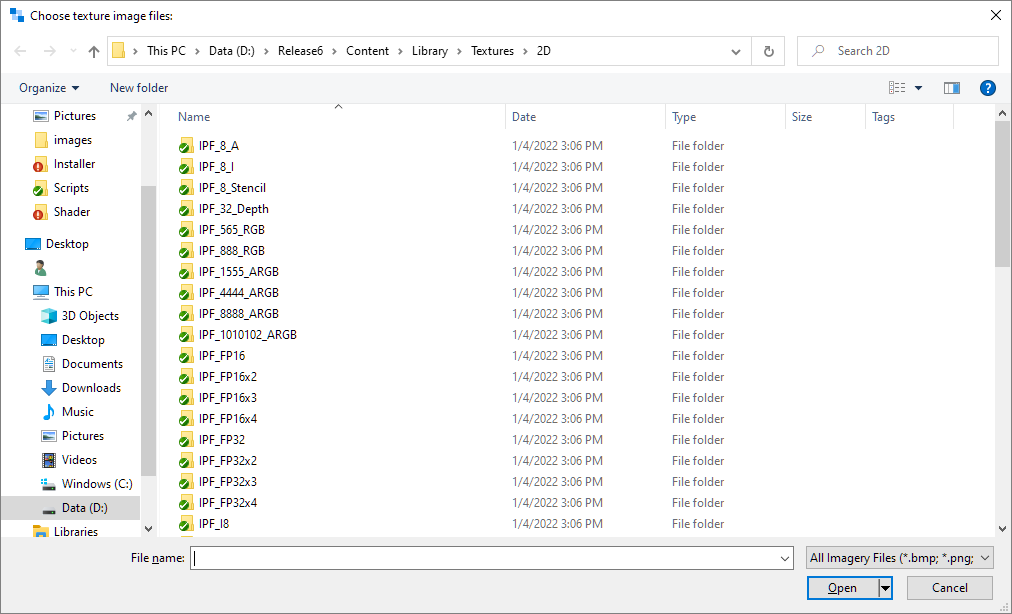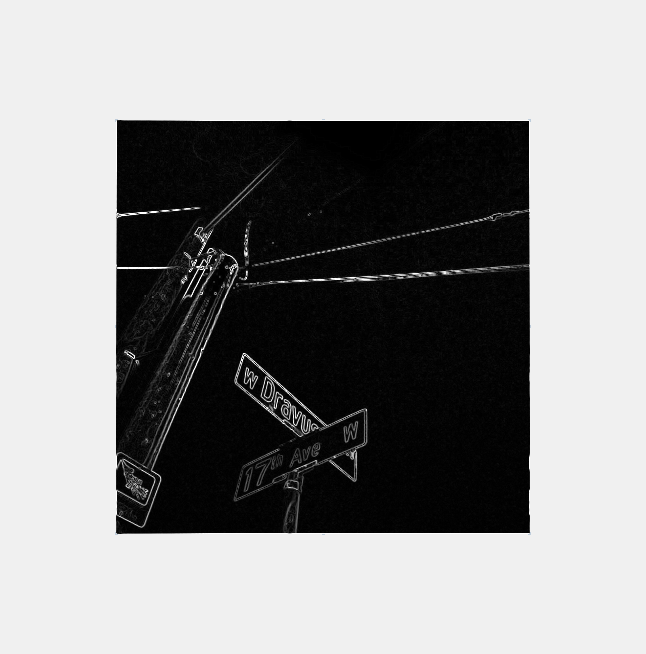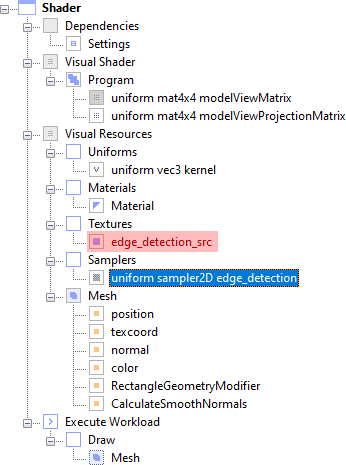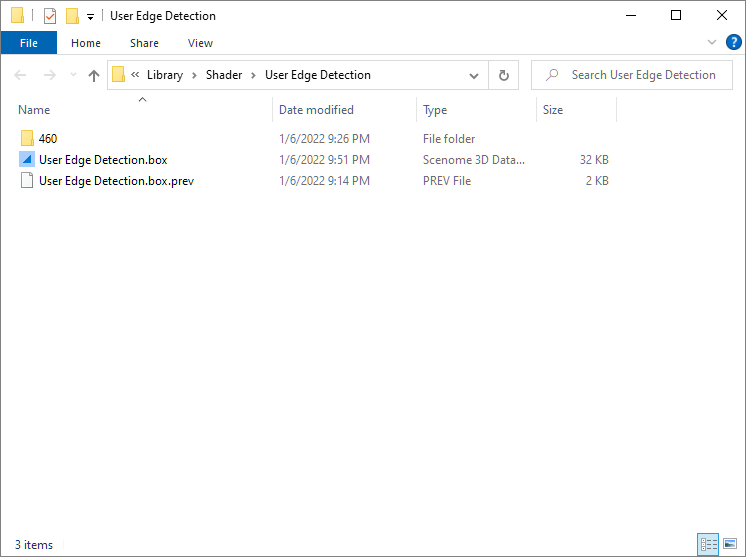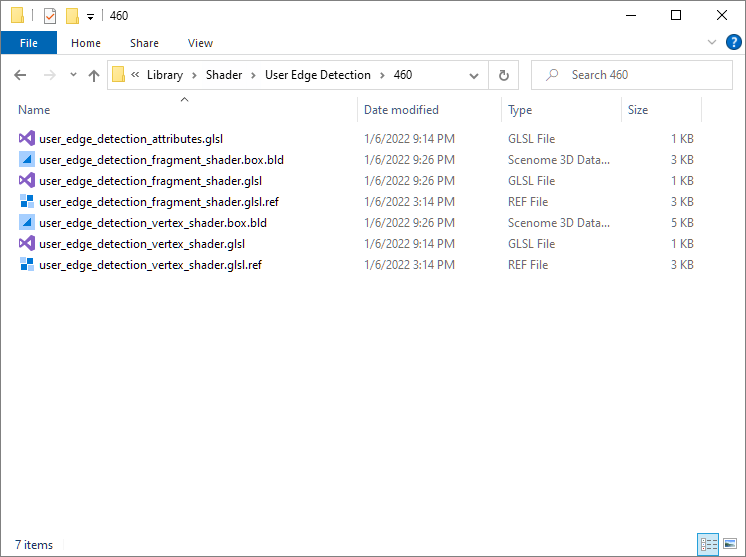Copy the following shader code into SPA_Sobel.glsl.
Copy Text To Clipboard
#ifndef SPA_SOBEL
#define SPA_SOBEL
#if __VERSION__ < 130
#define KERN_PIXEL( _x, _y ) ( texture2D( sampler, texcoords + onePixel * vec2( _x, _y ) ) )
#else
#define KERN_PIXEL( _x, _y ) ( texture( sampler, texcoords + onePixel * vec2( _x, _y ) ) )
#endif
void SPA_ConvoluteSobel( sampler2D sampler, vec2 image_size, vec2 texcoords, vec3 kernel, out vec4 res )
{
vec2 onePixel = vec2( 1.0, 1.0 ) / image_size;
float dx = ( length( KERN_PIXEL( -1, -1 ) * kernel[0] +
KERN_PIXEL( -1, 0 ) * kernel[1] +
KERN_PIXEL( -1, +1 ) * kernel[2] )
-
length( KERN_PIXEL( +1, -1 ) * kernel[0] +
KERN_PIXEL( +1, 0 ) * kernel[1] +
KERN_PIXEL( +1, +1 ) * kernel[2] ) );
float dy = ( length( KERN_PIXEL( -1, -1 ) * kernel[0] +
KERN_PIXEL( 0, -1 ) * kernel[1] +
KERN_PIXEL( +1, -1 ) * kernel[2] )
-
length( KERN_PIXEL( -1, +1 ) * kernel[0] +
KERN_PIXEL( 0, +1 ) * kernel[1] +
KERN_PIXEL( +1, +1 ) * kernel[2] ) );
float val = length( vec2( dx, dy ) );
res = vec4( val, val, val, 1.0 );
}
// !SPA_SOBEL
#endif
This is a fairly basic filter, but it will work very well for this example.
